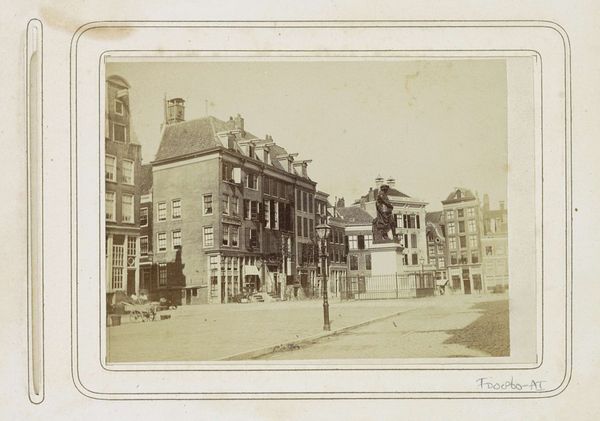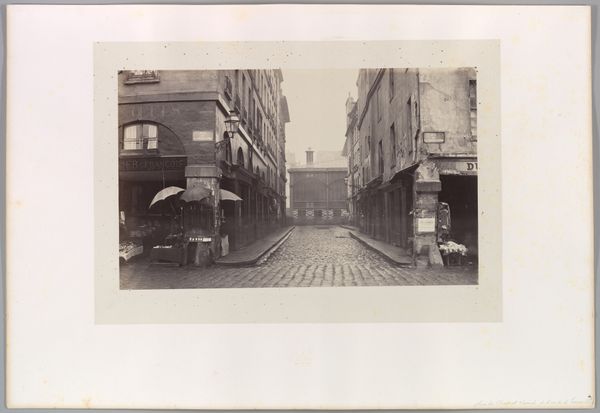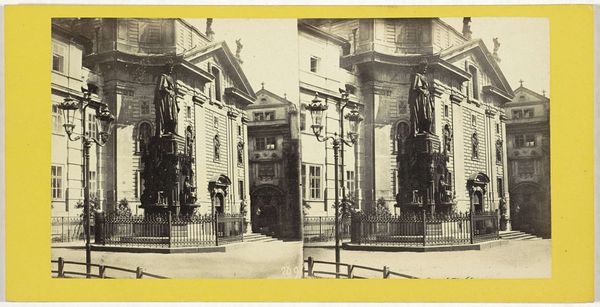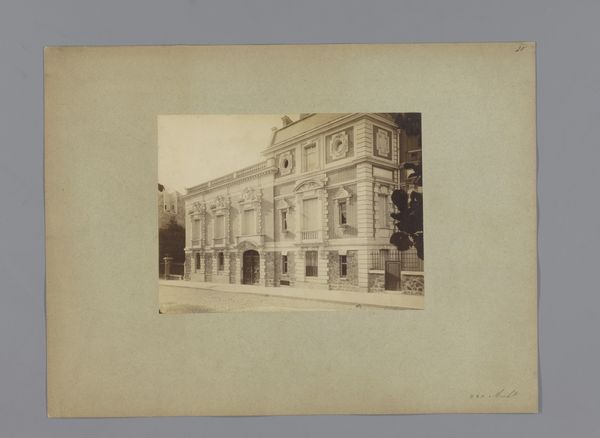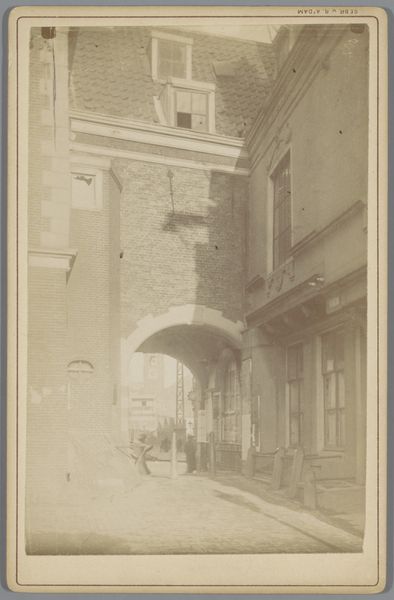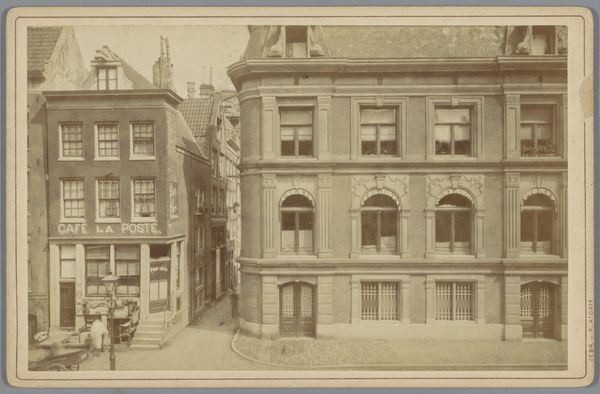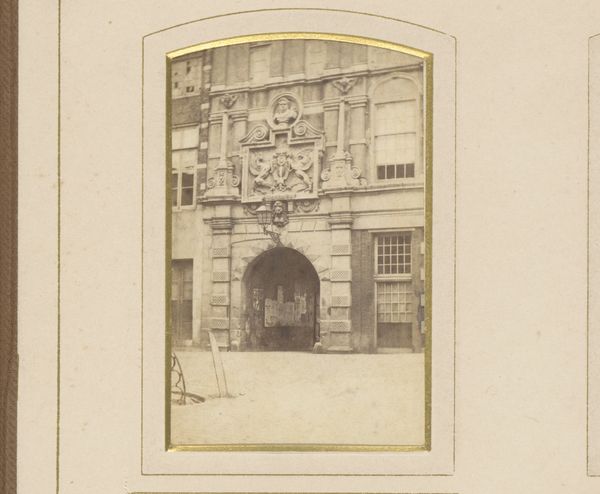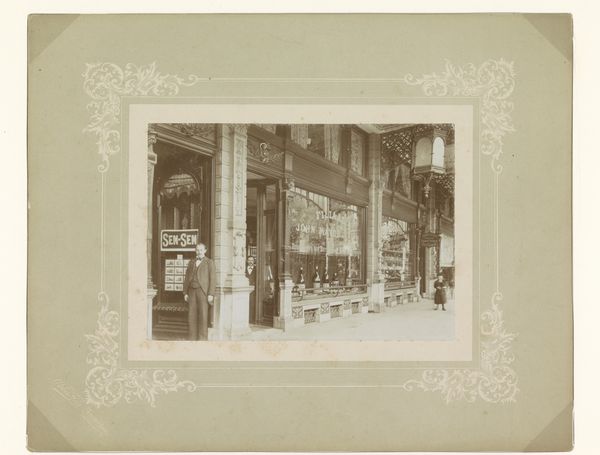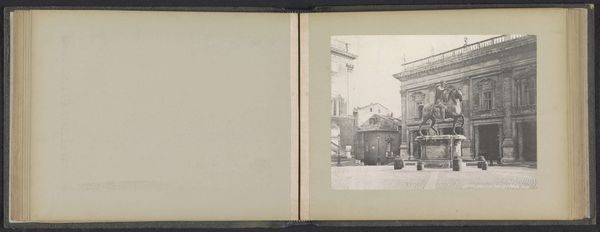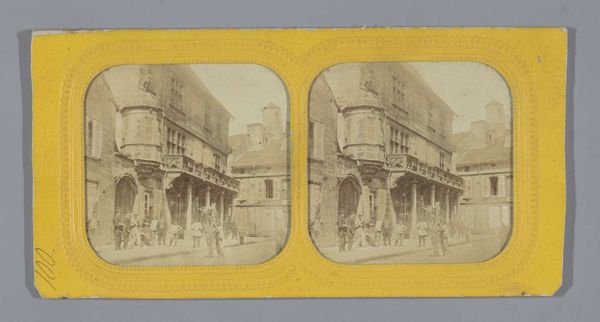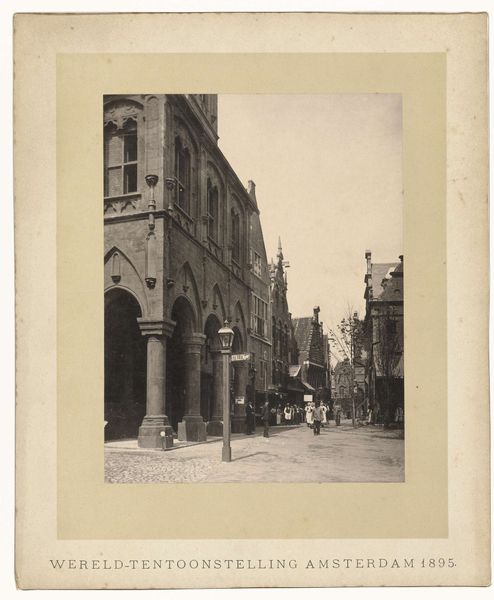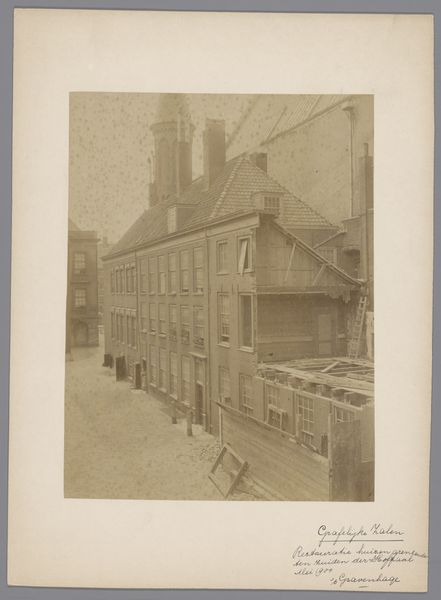
Dimensions: height 86 mm, width 174 mm
Copyright: Rijks Museum: Open Domain
Curator: Pieter Oosterhuis created this gelatin-silver print, titled "View of Achter de Dom and the Dom Church, Utrecht" sometime between 1859 and 1865. It's now held in the Rijksmuseum collection. Editor: There's an immediate stillness to the image. The muted tones and almost desolate street scene evoke a palpable quietness. It makes me consider the experience of city life. Curator: The photograph certainly participates in a larger 19th-century cultural project of documenting urban spaces. We see the emerging medium of photography being deployed to capture cityscapes and thus create new avenues to represent public life. Editor: True, and beyond that, the dominance of the church looming in the background emphasizes the church's power during the depicted period. In comparison to the rigid architecture and social stratification, the small people fade away. Curator: Indeed. Romanticism in the picture flirts with this very idea of power, also framing society and individuality in such terms. Consider that photography like this gained momentum with the rise of national museums. Images could educate and inspire a sense of national pride tied to the places they depict. Editor: I'd push a bit further by looking at the historical conditions of marginalized communities that existed at that moment in Utrecht. While we might stand in awe of the cathedral, those sentiments likely wouldn't be felt equally across the social classes. It represents power and maybe in that power lies subjugation. Curator: I think that your position speaks to a relevant reinterpretation and an ongoing revisioning of artworks over time, Editor. That this photography exists now in the 21st-century and can prompt conversations about social justice speaks to its endurance. Editor: Yes, by situating our experience with that work of art in a specific place, such as the Rijksmuseum, we're encouraged to keep interrogating social narratives while building inclusive public spaces. Curator: I'm grateful for how you spotlighted how historic photographs serve as an active prompt to discuss our history and presence today. Editor: I am appreciative of the historic dimensions of your research of artistic intention and the institutional context.
Comments
No comments
Be the first to comment and join the conversation on the ultimate creative platform.
